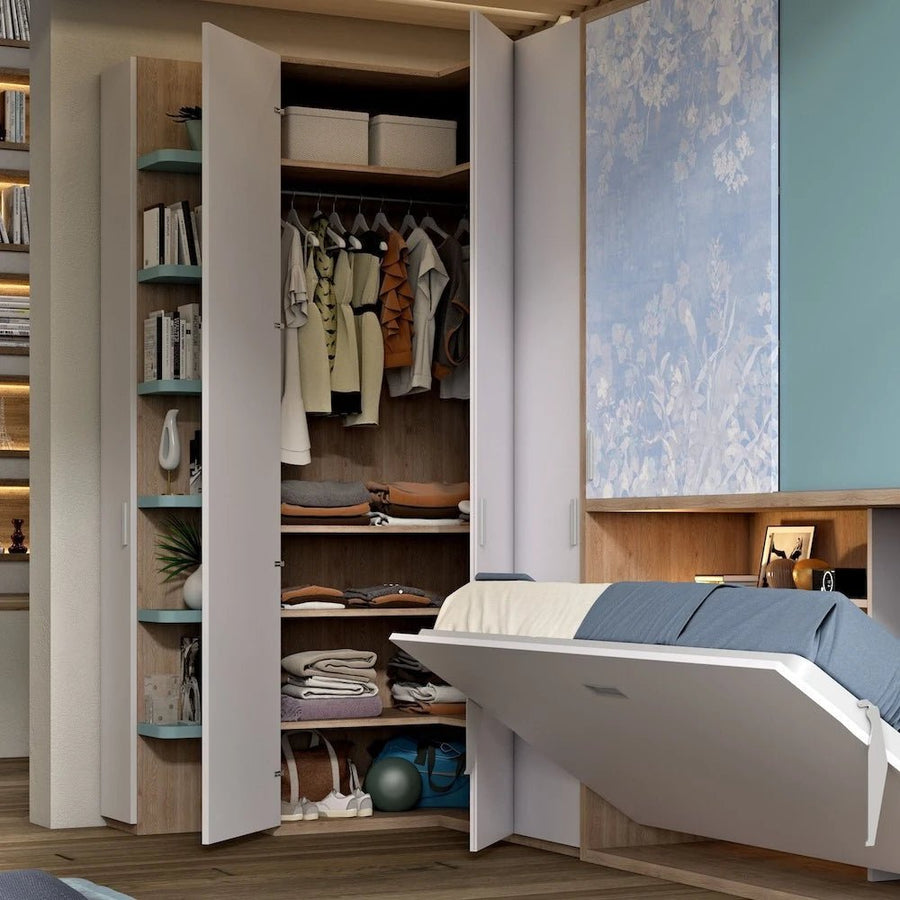A Murphy bed, also known as a wall bed, is a great solution for maximizing space in small rooms. Whether you live in a studio apartment, a home office, or a guest room, a Murphy bed allows you to create a flexible space that can easily transition from a sleeping area to a functional living space. Installing a Murphy bed can seem daunting, but with the right tools, materials, and step-by-step guidance, you can do it efficiently. In this article, we will explore the process of installing a Murphy bed, providing you with tips and instructions to ensure a successful installation.
Understanding the Murphy Bed Components
Key Components of a Murphy Bed
Before diving into the installation process, familiarize yourself with the components you’ll be working with. Most Murphy beds consist of the following parts:
- Bed Frame: This is the structure that supports the mattress and provides strength to the entire bed. It often includes a foldable mechanism and side brackets.
- Hinge System: The hinge mechanism allows the bed to fold up against the wall. Ensure that you have the right kind of hinges that will support the weight of the mattress and frame.
- Mounting Brackets: These brackets secure the bed frame to the wall. They provide stability and support when the bed is in the upright position.
- Support Legs: When the bed is lowered, support legs provide stability and prevent wobbling. Some designs may use a leg that swings down automatically when the bed is pulled out.
- Mattress: The mattress needs to fit the dimensions of the Murphy bed frame. Consider a thinner mattress for easier folding and to ensure proper functionality.
Tools and Materials Needed
Gather the necessary tools and materials before starting the installation. You will need:
- Tools:
- Drill with drill bits
- Screwdriver (Phillips and flathead)
- Level
- Stud finder
- Tape measure
- Adjustable wrench (for bolts)
- Hammer
- Safety goggles
- Materials:
- Murphy bed kit (with all components listed above)
- Wall anchors (for additional support)
- Optional: Additional lumber (in case of custom adjustments)
By having these tools and materials ready, you can streamline the installation process and avoid unnecessary interruptions.
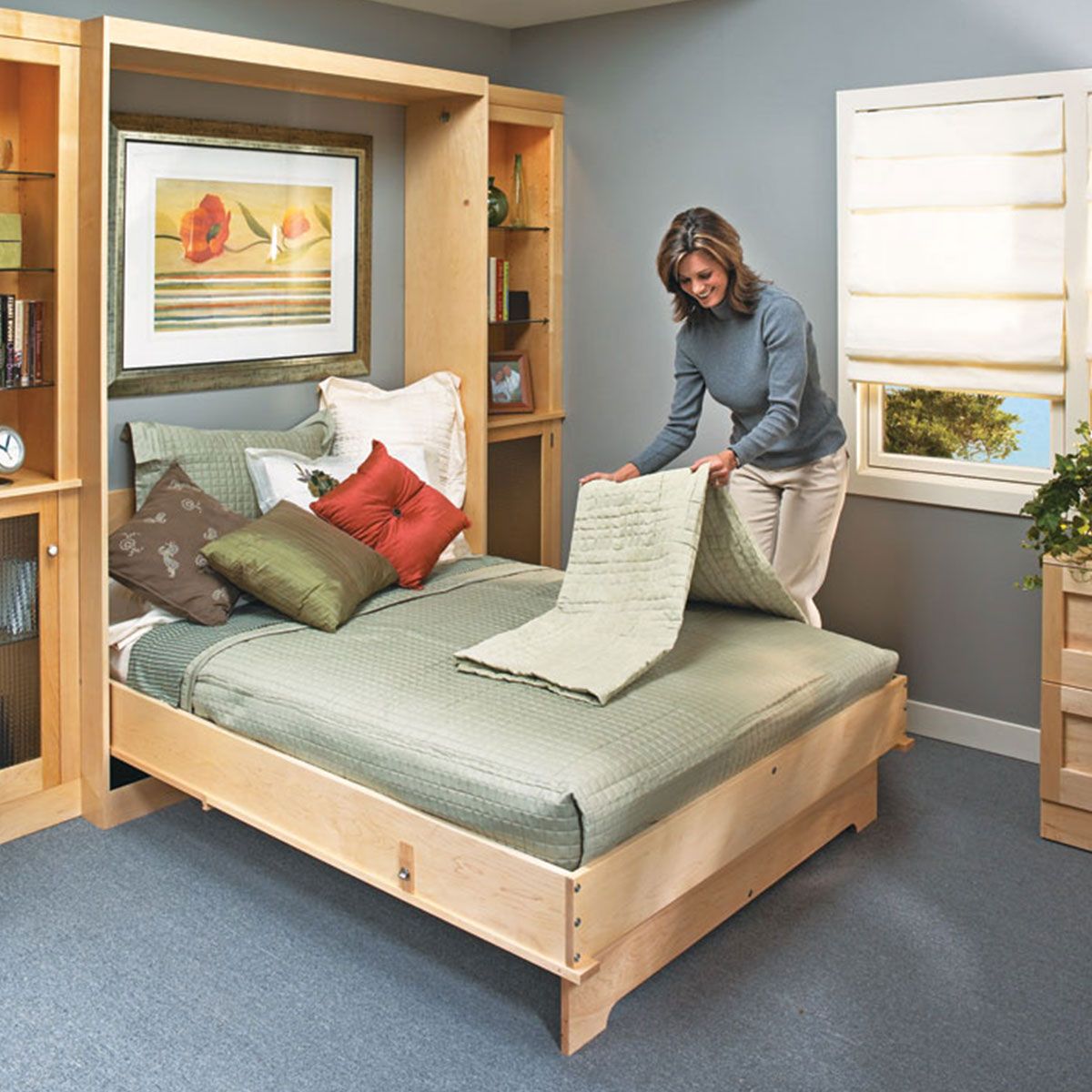
Preparing the Installation Area
Choosing the Right Location
Select a suitable wall for your Murphy bed installation. Consider choosing a wall near outlets for easy access to power if you plan to place bedside lamps or charging stations. Ensure that this area has enough space for the bed to unfold safely without obstructions, such as furniture or wall decorations.
Also, think about the height at which you want to position the bed. It should be comfortable to use and easy to access. Generally, the top of the bed frame should be at least 18 to 24 inches off the floor.
Clearing the Space
Once you’ve identified the location, clear the area of any furniture or obstacles to ensure you have enough room to work. A clutter-free space promotes safety; you can move around comfortably without the risk of tripping over items.
Make sure to have enough working space around the wall to manipulate tools and equipment easily. It also makes it easier to move large components such as the bed frame into place.
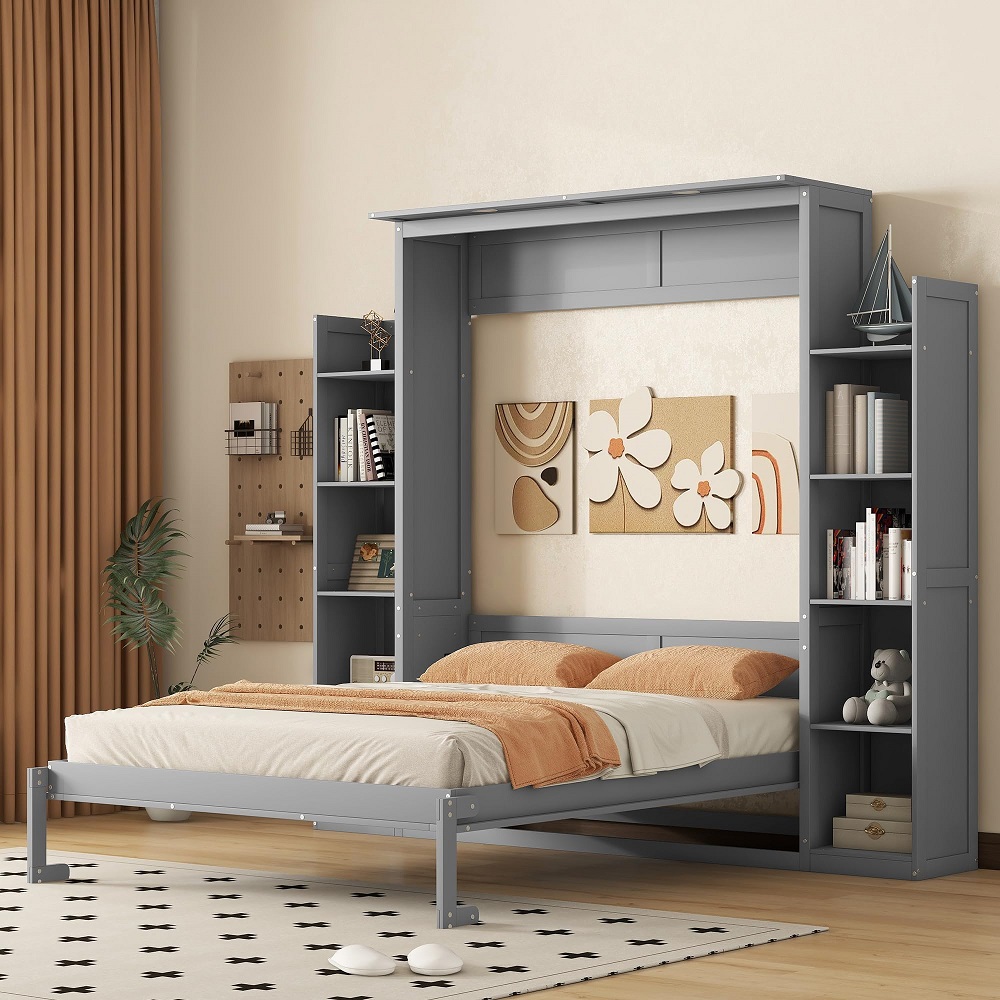
Installing the Wall Bracket
Finding Wall Studs
Using a stud finder, locate the wall studs in the area where you plan to install the Murphy bed. Wall studs provide the necessary support to anchor the brackets securely. It’s crucial to mount the bed to studs, as drywall alone may not support the weight of the bed and mattress effectively.
Once you have identified the studs, mark their locations lightly on the wall with a pencil. This step will guide you when you are ready to install the mounting brackets.
Attaching the Wall Bracket
Follow the instructions provided with your Murphy bed kit to install the wall bracket. Place the mounting bracket at your desired height, ensuring it’s level. Using the drill, secure the bracket to the wall using appropriate screws or wall anchors, following the manufacturer’s recommendations.
Double-check that the bracket is firmly attached and can support the weight of the bed frame without wobbling. This part of the installation is crucial to ensure safety and functionality when the bed is in use.
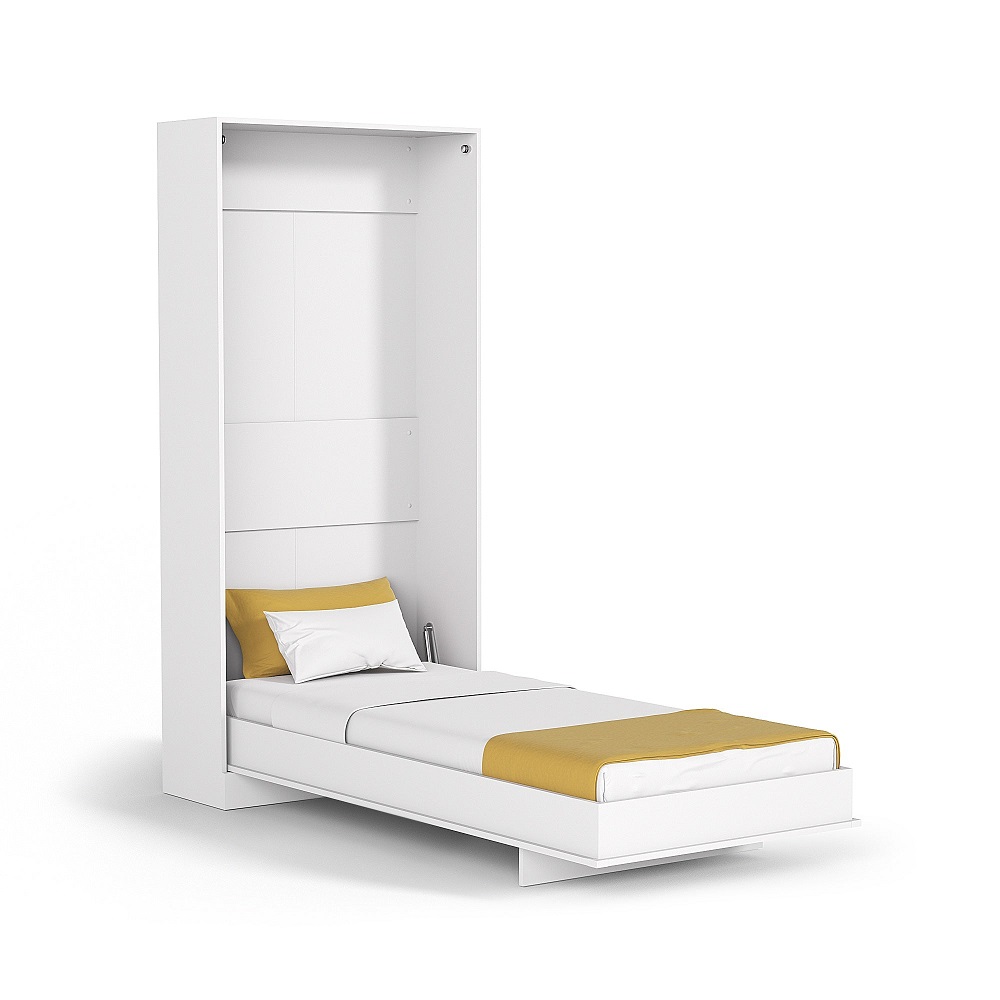
Attaching the Bed Frame
Preparing the Bed Frame
With the wall bracket securely installed, it’s time to prepare the bed frame for attachment. Start by laying the bed frame on a flat surface to prevent any damage during manipulation. If your Murphy bed kit requires assembly, follow the included instructions to put the bed frame together.
Once assembled, you can attach the hinge system according to the kit’s guidelines. Ensure that the hinges are properly aligned and securely fastened to the bed frame. Depending on your kit, this might involve using screws and bolts, so make sure everything is tightened appropriately.
Mounting the Bed Frame
Now, lift the bed frame and align the hinges with the wall bracket. You may need a second person to help support the weight as you maneuver the frame. Attach the bed frame to the wall bracket using the designated screws or bolts provided in your kit.
After securing the bed frame, gently test the folding mechanism by raising and lowering it once or twice. This ensures that everything operates smoothly before proceeding with the next steps.

Adding the Support Legs
Installing Support Legs
Support legs are critical for maintaining the stability of the Murphy bed when it is in use. Most Murphy bed kits come with pre-drilled holes, making it easy to mount the support legs. Follow the manufacturer’s instructions to properly attach the legs to the bed frame.
When installing the support legs, ensure they fold away automatically when you lift the bed. This will create a clean and polished look when the bed is stowed away.
Testing Stability
After installing the support legs, lower the Murphy bed into the sleeping position and check its stability. Push gently on the bed to test for wobbling or any instability. If everything is properly secured, the bed should feel solid and ready for use.
Take a moment to familiarize yourself with how to fold and unfold the bed correctly. Practice the motions to gain confidence in the process and ensure that you can operate the bed easily when needed.
Choosing the Right Mattress
Selecting the Appropriate Mattress
Choosing a mattress for your Murphy bed requires careful consideration. Many Murphy bed kits specify a preferred thickness and type of mattress to ensure proper functionality. Look for a mattress that is lightweight, as heavier options may strain the folding mechanism. A thickness of 10 inches or less usually works best for most Murphy beds.
Common mattress options for Murphy beds include memory foam, latex, or other lightweight materials that provide comfort and support. Keep in mind that a thinner mattress usually folds more easily and fits the bed frame well.
Ensuring Fit and Comfort
Once you have selected a mattress, place it on the bed frame to check for fit. The mattress should sit snugly within the frame without excessive overhang. If you plan to keep the mattress in the Murphy bed permanently, ensure it’s comfortable for sleeping.
Test the mattress by lying down for a moment to confirm that it meets your comfort preferences. This stage is essential for ensuring that the bed will meet your expectations when it comes to usability and comfort during sleep.
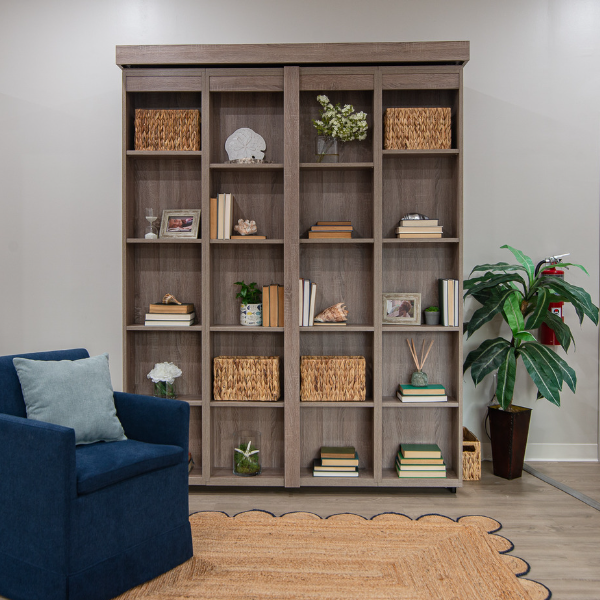
Finalizing the Installation
Making Adjustments
After confirming that all components of your Murphy bed are securely installed, take a moment to make any necessary adjustments. Check that all screws, bolts, and hinges are tight, and ensure the bed operates smoothly without any resistance when opening or closing.
Consider applying a protective finish or paint to any exposed materials for aesthetic purposes if you’ve made custom modifications. This can help integrate the bed seamlessly into your existing decor and enhance the overall look of the installation.
Enjoying Your New Murphy Bed
With everything in place, step back and admire your new Murphy bed. It’s now ready for use! When guests visit or when you need the extra room, you can simply fold it down and enjoy the additional sleeping space.
Take some time to showcase the functionality of your new bed to family and friends. There’s nothing like the satisfaction of completing a DIY project that adds value and versatility to your home.
Conclusion
Installing a Murphy bed is an effective way to maximize space in your home while providing a flexible sleeping solution. By understanding the components, preparing the space, and following these step-by-step instructions, you can successfully install a Murphy bed tailored to your needs.
Ensuring comfort and functionality throughout the installation process will create a delightful experience for years to come. With a bit of effort, you can transform your home with a stylish and practical Murphy bed that enhances your living space. Enjoy the newfound versatility that comes with this unique addition to your home!
